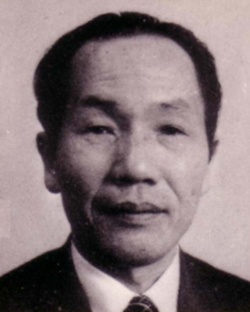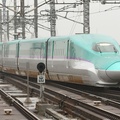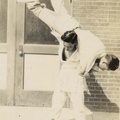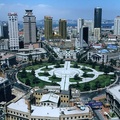If the name Shoichi Ban rings a bell, you may be familiar with the relationship between Japan and mainland China. Ban served as Japanese envoy to China from 1977 to 1980 and is known as one of the diplomats who built the foundation for close relations with mainland China.
Mr. Ban, a contributor to Japan-China relations in modern society, was also deeply involved in Japan's postwar immigration policy. In this article, I would like to introduce Mr. Ban's character through his involvement in the immigration of Japanese refugees to California and the project to send agricultural laborers to the United States, in terms of immigration and contributions overseas.
About Ban
Ban was born in Kochi Prefecture in 1924. His father was one of the leading figures in his hometown and well respected in the local community, and his mother came from a distinguished samurai family.
Not only was he of good birth, but he was also financially well off, so he attended the prestigious local school, Tosa Junior High School (now Tosa Junior and Senior High School), and then went on to the Naval Accounting School, after which he served in the navy during the war. After the war ended, he entered the Faculty of Law at the University of Tokyo, and qualified as a lawyer while still a student in 1948.
From an early age, Ban had a very big dream of working in a position that would help make Japan a country that the international community could be proud of. At the forefront of his mind was the great man from his hometown, Ryoma Sakamoto, who was one of the driving forces behind Japan's modernization.
At the age of 28, Ban was already a successful lawyer, had a good job, and had a family. However, he felt that being a lawyer was not enough to achieve his dream of becoming "the Ryoma of modern society." He made up his mind to take the diplomatic exam, which he passed with flying colors. Ban began a new career as a diplomat.
Relief for Japanese refugees
The first job the Ministry of Foreign Affairs gave to Ban was to work as a secretary at the Consulate General in San Francisco (hereafter referred to as San Francisco).
When Ban came to Soko in the early 1950s, Japanese society was experiencing a boom due to the special procurement demand generated by the Korean War, but the country was also hit by serious storm and flood damage, such as Typhoon Jane (1950) and Typhoon Ruth (1951). Typhoon Ruth, which struck southern Kyushu, caused particularly severe damage, leaving many people in Kagoshima Prefecture without homes or jobs, and the Japanese government was struggling to respond.
So Mr. Ban came up with the idea of using the refugee relief system established by the US government to have the disaster victims relocate to California. At the time, a shortage of agricultural laborers was a social issue in California, so he thought that by relocating the disaster victims to California, the problems in both countries would be resolved.
In addition, Governor Earl Warren of California at the time was proactive in protecting the rights of Japanese Americans and allowing the first generation to obtain American citizenship, which was a major boost to the relocation plan.1
In 1953, the Ministry of Foreign Affairs took the lead in relocating disaster victims, marking the beginning of postwar relocation.
What Ban wanted for the immigrants was for them to adapt to the local society as quickly as possible. Most of them could not speak English and had difficulty communicating with their employers, which caused problems between the two parties. Each time this happened, Ban went to the site and acted as a mediator, trying to resolve the problem.
One reason why Ban worked so hard to support immigrants was that he was a representative of the Japanese government, but I also think he wanted to improve the image of Japanese people in American society. For Japan, a nation that had lost the war, improving the image of the Japanese people was considered essential to increasing the country's international credibility.
Agricultural Laborer Rice Project
Once the immigration of Japanese refugees had settled down, Ban was put in charge of the agricultural laborer dispatch program to the United States, which began in 1956.2 Due to the recession in the United States and other factors, this program was changed to the agricultural trainee dispatch program in 1964, and approximately 4,000 young Japanese people were sent to California between 1956 and 1964. The young people sent during this period were known as short-term agricultural laborers or California agricultural trainees.
Ban's main job was to dispatch the necessary number of Japanese people in response to requests from farm managers and agricultural associations in various regions, and to act as an advisor to the parties involved. Many of the employers were Japanese farm managers. Many of them hoped that by hiring Japanese people who shared not only their ethnicity but also their work ethics, work on site would proceed more smoothly.
As with the refugee resettlement, Ban faced many problems with this project. In particular, a labor dispute broke out at an asparagus farm in Stackton, Northern California, among the young people sent in the first batch (1956-57), causing serious problems for the fledgling project.
The main problem was that the farm was run by a Jewish farmer, who, without the young people's consent, changed their hourly wage system to piecework pay. Even though it was not yet time for harvesting asparagus, the young people were woken up at 4am and forced to harvest. However, they were unable to harvest the asparagus, and because they were being paid by the piecework, they ended up working for free for days on end.
Upon hearing this news, Ban immediately went to the site and began negotiations with the farm manager to improve employment conditions. However, the negotiations were difficult, and some of the young people began to decide to return to Japan, so while continuing to negotiate with the manager, Ban also tried to persuade the young people.
"I think you are like Ito Hirobumi or the Iwakura Mission of old. You went to a foreign country through hardship and learned a lot while you were there. It is true that the management was at fault in this incident. However, despite what has happened, I want you to not give up or get discouraged and to persevere until the end. The great men of the Meiji era went through many hardships abroad, but they persevered when it was time to, and persevered patiently in order to develop the country of Japan, so I think it is very important for you to learn from such people."
Citing the example of the hardships of their predecessors who went abroad in the past but whose hardships eventually bore fruit, Ban urged the young people that their current hardships will surely be rewarded someday.
As a result of negotiations, Ban succeeded in improving working conditions to a certain level. Although a small number of the young men returned to Japan, the majority remained in California and were assigned to farms in other areas.
Highly praised for his skills in providing relief to these Japanese refugees and in providing rice to agricultural laborers, Ban came to be seen as a "hope" for the Japanese government to take on diplomacy in the near future.
As Secretary General of the Japan Overseas Cooperation Volunteers
After completing his term at Kuwana, Ban was involved in a wide range of jobs related to Japan's foreign policy, including working at the Consulate General in Pretoria (now the Embassy) and the Embassy in Islamabad, investigating overseas migration conditions in the Migration Division, and dispatching Japanese engineers overseas in the Technical Cooperation Division.
In the mid-1960s, the Ministry of Foreign Affairs began to send talented Japanese engineers to developing countries as a way of contributing to the international community. In connection with this, Ban served as Secretary-General of the Japan Overseas Cooperation Volunteers from 1972 to 1977. At the time, there was concern about the presence of young people who were involved in far-left ideology and terrorism, so he himself became an interviewer and was involved in selecting energetic young people with promising futures.
Mr. Ban believed that talented Japanese people, especially young people who will support the future of Japanese society, should be actively sent overseas to develop human resources who can contribute not only to the international community but also to Japanese society. This idea led to the development of the Japan Overseas Cooperation Volunteers program.
After that, Mr.
From 1977 to 1980, Ban was dispatched to the Japanese Embassy in Beijing as a minister for four years, where he built the foundations for close relations with mainland China, becoming known as a contributor to Japan's diplomatic strategy.
After completing his work as envoy, with the support of those around him, Ban announced his intention to enter politics. He ran in three national elections, but lost each time. Although he was well known as a diplomat, he was not well known in his home prefecture of Kochi, which was the reason for his defeat. Sadly, Ban never pursued a career as a politician.
In May 2001, Ban passed away at the age of 77. At the time, Emperor Akihito and Empress Michiko sent their condolences through the Japan Overseas Cooperation Volunteers Secretariat (now the Japan International Cooperation Agency, JICA), where Ban had assumed leadership as Secretary-General.
Although Mr. Ban was a "bureaucrat," I think he recognized the people not as "pawns to be expended" to gain national interests, but as irreplaceable beings walking alongside the nation. Mr. Ban was not able to become a politician, but I think he is respected by many people as the "Ryoma of modern society."
Notes:
1. Earl Warren was known as a "spirited anti-Japanese activist" in prewar American society, but he is also known for turning to a pro-Japanese supporter immediately after Japan's defeat in the war.
2. The Agricultural Laborer Dispatch Project was started as one of the measures to overcome the severe economic situation in Japan immediately after the war by sending young people from rural areas who were facing problems with finding employment or inheritance to California, with the aim of bringing advanced agricultural techniques from California to Japan, cultivating leadership in rural areas throughout Japan, and furthermore, helping young people who wanted to develop land within Japan or emigrate overseas to obtain the capital necessary for development or migration. Originally, the Ministry of Agriculture and Forestry promoted the project with the advice of experts on Japanese agricultural policy at the time, such as Akira Nasu, Tadaatsu Ishiguro, and Kanji Kato, but the Ministry of Foreign Affairs put pressure on the Ministry of Agriculture and Forestry in the middle of planning, so it was started as a joint project between the two ministries.
The first group of students was sent from the fall of 1956 to the early summer of the following year, and about 1,000 were selected from more than 10,000 young people from all over Japan, from Hokkaido in the north to Kagoshima in the south. In the Kyushu region, which had already produced many refugees, the applicant ratio swelled to several hundred.
References
Shoichi Ban, Volunteer Spirit, 1978, Kodansha
Japan Agricultural Exchange Association, "50 Years of the Agricultural Youth Overseas Dispatch Program: The Path of Grassroots Ambassadors," 2002, Japan Agricultural Exchange Association,
Keiko Fukuda, " Japanese Refugees Who Moved to the United States ," Discover Nikkei, 2008
Itsuo Yoshioka, "Political Style: The Life of Shoichi Ban, a Diplomat Who Aimed to Become Prime Minister," Koryosha Shoten, 2009
New Farmers, the journal of the Japan Agricultural Exchange Association
© 2015 Takamichi Go






